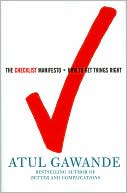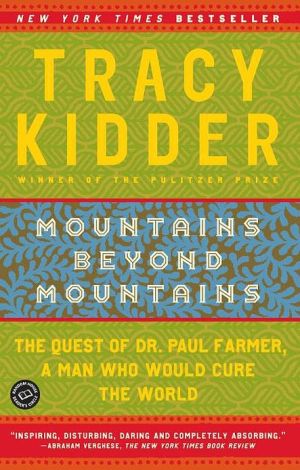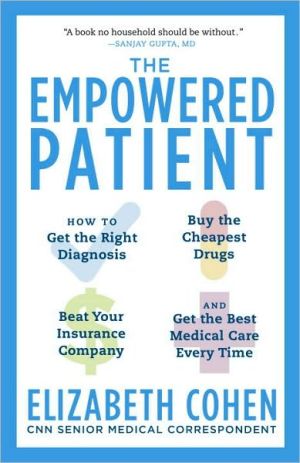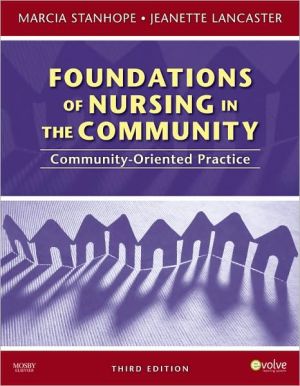Guide to Culturally Competent Health Care
Build your students confidence whenrelating to different cultures in a healthcare environment. This concise, easy-to-readhandbook tackles an often awkwardsubject in a direct, non-intimidating style.
Search in google:
Purnell and Paulanka (both health and nursing sciences, U. of Delaware-Newark) begin by discussing transcultural diversity and health care, and the Purnell Model for Cultural Competence. Then they look in turn at 27 cultural groups North America, looking at such aspects as communications, family roles and organization, high-risk health behaviors, pregnancy and childbearing practices, spirituality, and health-care practices. The small handbook abstracts information from their textbook Transcultural Health Care: A Culturally Competent Approach. Annotation ©2004 Book News, Inc., Portland, OR Doody Review Services Reviewer:Penny Wolfe Moore, RNC, PhD(Southwestern Adventist University)Description:This book uses the Purnell Model for Cultural Competence as the organizing framework for each chapter. Unfortunately the model itself is published in print too small to read. The book is about one-quarter of the size of the average textbook, but too big for a pocket. Purpose:. . the goal of this Guide is to promote cultural sensitivity and culturally competent care that respects each person's right to be understood and treated as a unique individual." An additional objective is to provide a format "that is concise and easy to understand." These worthy objectives have been met. The author states that much of the information in this book is synthesized from Transcultural Health Care: A Culturally Competent Approach, 2nd edition (F.A. Davis, 2003).Audience:Several times the authors mention the intended audience as healthcare providers. As an educator, I see this book as a great supplementary text for students in healthcare professions. Much in this book helped me understand students in the classroom. One of the authors, Larry D. Purnell, is the creator of the model upon which the book is based.Features:After the model is explained "each chapter is organized by the Model's domains of culturally sensitive care and provides key approaches and intervention." Chapters are titled "People of ______ Heritage." The heritage groups are presented alphabetically and tabbed accordingly. Each chapter includes communications, family information, biocultural ecology, high-risk behaviors, nutrition, pregnancy issues, death rituals, spirituality, and healthcare practices. Twenty-seven different "heritage" groups are covered.Assessment:I love this little book. It gives the important information in bulleted lists. It includes a greater number of cultural groups than many larger texts. Students would be wise to get this as a reference in the first healthcare course and reference it throughout their education. It would be useful on the shelf of every healthcare area.
1. Transcultural Diversity and Health Care\ 2. The Purnell Model\ 3. People of African American Heritage\ 4. The Amish\ 5. People of Appalachian Heritage\ 6. People of Arab Heritage\ 7. People of Bosnian Heritage\ 8. People of Chinese Heritage\ 9. People of Cuban Heritage\ 10. European American Heritage\ 11. People of Filipino Heritage\ 12. People of German Heritage\ 13. People of Greek Heritage\ 14. People of Haitian Heritage\ 15. People of Hindu Heritage\ 16. People of Hmong Heritage (NEW)\ 17. People of Iranian Heritage\ 18. People of Irish Heritage\ 19. People of Italian Heritage\ 20. People of Japanese Heritage\ 21. People of Jewish Heritage\ 22. People of Korean Heritage\ 23. People of Mexican Heritage\ 24. Navajo Indians\ 25. People of Puerto Rican Heritage\ 26. People of Russian Heritage\ 27. People of Somalian Heritage (NEW)\ 28. People of Turkish Heritage\ 29. People of Vietnamese Heritage
\ Reviewer:Penny Wolfe Moore, RNC, PhD(Southwestern Adventist University)\ Description:This book uses the Purnell Model for Cultural Competence as the organizing framework for each chapter. Unfortunately the model itself is published in print too small to read. The book is about one-quarter of the size of the average textbook, but too big for a pocket. \ Purpose:. . the goal of this Guide is to promote cultural sensitivity and culturally competent care that respects each person's right to be understood and treated as a unique individual." An additional objective is to provide a format "that is concise and easy to understand." These worthy objectives have been met. The author states that much of the information in this book is synthesized from Transcultural Health Care: A Culturally Competent Approach, 2nd edition (F.A. Davis, 2003).\ Audience:Several times the authors mention the intended audience as healthcare providers. As an educator, I see this book as a great supplementary text for students in healthcare professions. Much in this book helped me understand students in the classroom. One of the authors, Larry D. Purnell, is the creator of the model upon which the book is based.\ Features:After the model is explained "each chapter is organized by the Model's domains of culturally sensitive care and provides key approaches and intervention." Chapters are titled "People of ______ Heritage." The heritage groups are presented alphabetically and tabbed accordingly. Each chapter includes communications, family information, biocultural ecology, high-risk behaviors, nutrition, pregnancy issues, death rituals, spirituality, and healthcare practices. Twenty-seven different "heritage" groups are covered.\ Assessment:I love this little book. It gives the important information in bulleted lists. It includes a greater number of cultural groups than many larger texts. Students would be wise to get this as a reference in the first healthcare course and reference it throughout their education. It would be useful on the shelf of every healthcare area.\ \ \ 4 Stars! from Doody\ \








